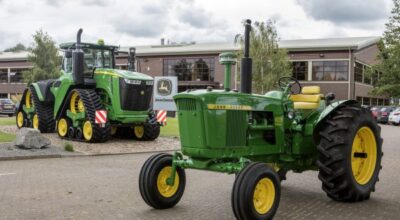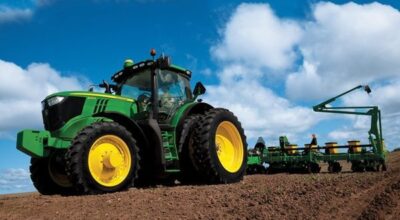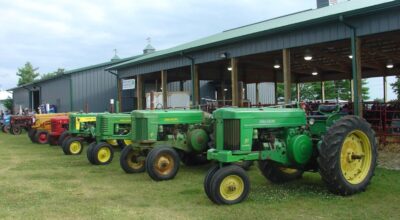For nearly a century, John Deere has been producing tractors for its customers that are now located around the world. However, a point in time more than 50 years ago is especially important in the company’s tractor production history. Yes, we’re talking about the introduction of the “New Generation of Power.”

Let’s take a closer look at this special point in time and learn about some of the features that made these pieces of equipment historical pillars for the company.
Leading up to the New Generation of Power
In 1953, a group of John Deere engineers was relocated from the tractor factory in Waterloo, IA, to a more secluded leased building nearby. This is where the team worked during the years leading up to the release, as it was a distraction-free work environment that allowed them to keep the project confidential.
The Introduction of the New Generation of Power
On August 30, 1960, John Deere dealers congregated in Dallas, Texas, for a product introduction. “Deere Day in Dallas,” as it’s now known, was the time and location where Deere unveiled the “New Generation,” a lineup that consisted of the 1010, 2010, 3010, and 4010 models. This introduction immediately improved Deere’s standing as a leader in tractor production and the models greatly differed from the two-cylinder machines that had been produced during the time leading up to 1960. Almost all the parts (95 percent) the machines were built with were specifically designed for this new line.
This introduction immediately improved Deere’s standing as a leader in tractor production and the models greatly differed from the two-cylinder machines that had been produced during the time leading up to 1960. Almost all the parts (95 percent) the machines were built with were specifically designed for this new line.
The Impact of the New Generation of Power
In 1959, leading up to the release of the New Generation, John Deere controlled about 23 percent of the wheel tractor market in the United States. Just two years after the introduction, in 1963, this number swelled to 34 percent. The New Generation of Power was known for its engines that delivered higher RPMs and horsepower, as well as more convenient controls and a sleek new design.
Final Thoughts
Since the New Generation of Power’s release, John Deere has continued to listen to the feedback of its customers to provide the equipment they need to get the job done. Only time will tell what the future has to hold.
If you enjoyed this post or want to read others, feel free to connect with us on Facebook, or Twitter!


